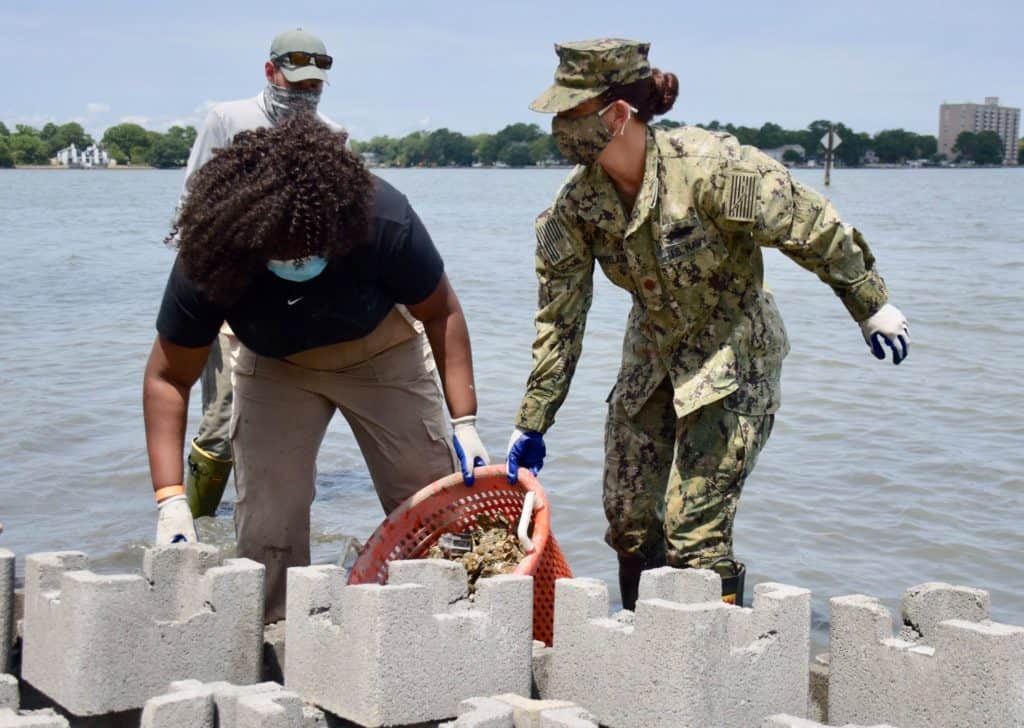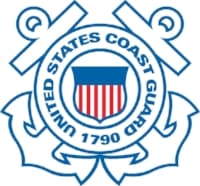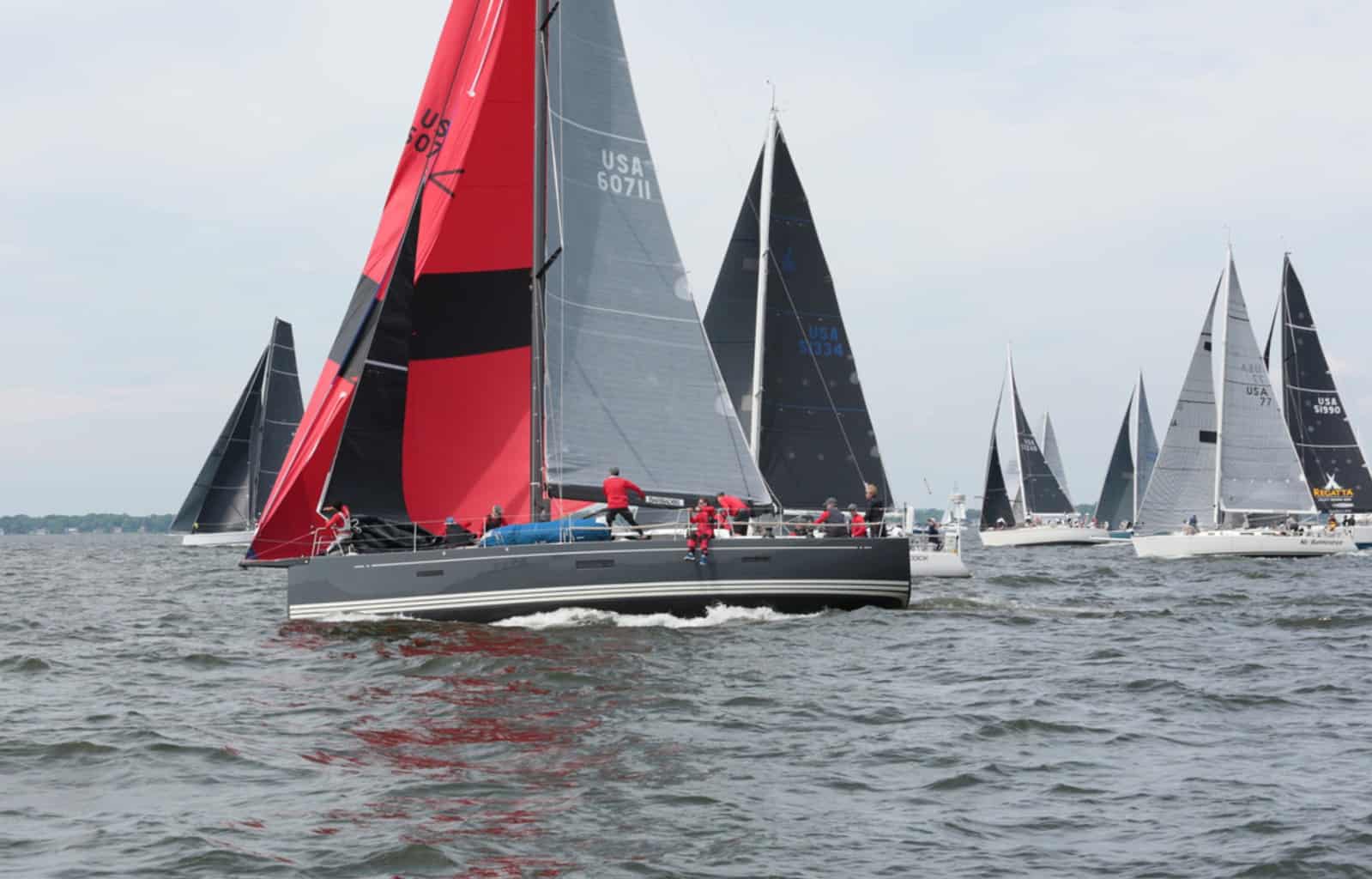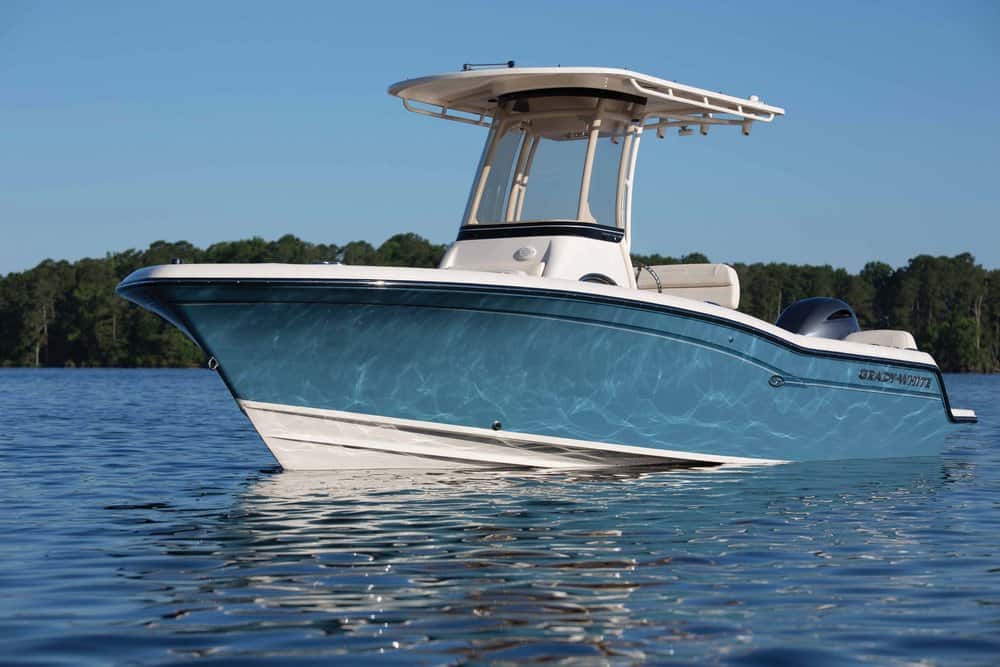The Lafayette River is now home to 500 beautiful underwater castles.
No, not that kind of castle: These concrete “castles” are made for oysters, not mermaids, to live in as part of the large-scale oyster restoration efforts on the Lafayette River. The Elizabeth River Project and Naval Support Activity (NSA) Hampton Roads worked together to install the castles along the shoreline at the Navy’s Lafayette River Annex in Norfolk last week.
Oyster castles are interlocking concrete blocks that mimic oyster reefs by offering a hard surface for spat (baby oysters) to attach to. Once placed in the water, castles also reduce erosion and preserve the shoreline while the oysters clean and filter the water.
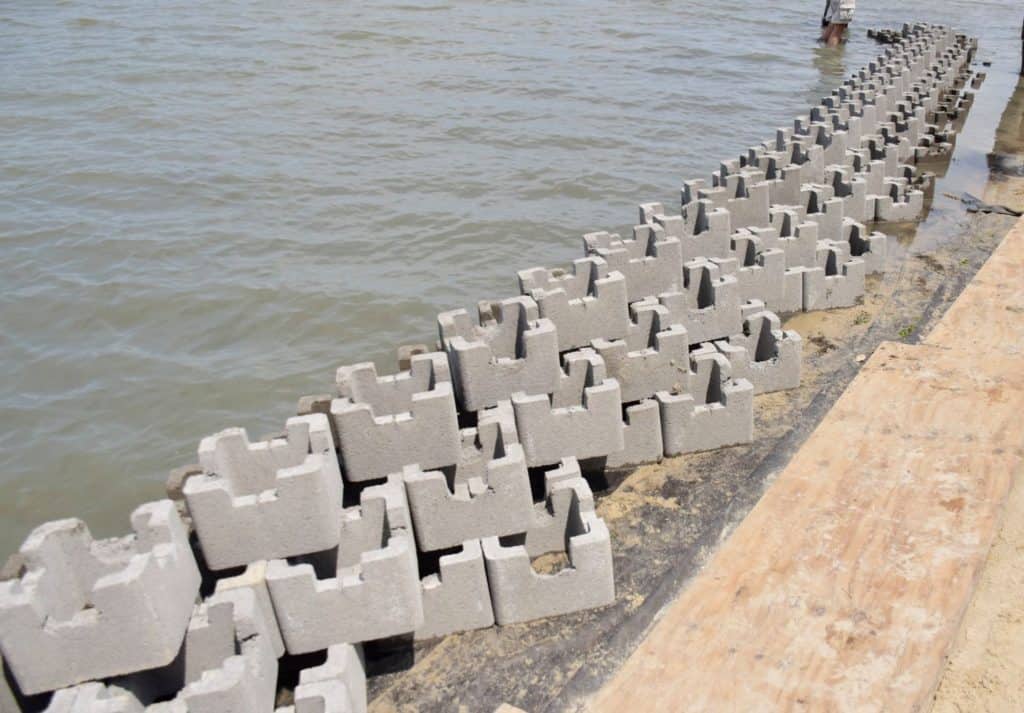
Volunteers from NSA Hampton Roads, Naval Facilities Engineering Command (NAVFAC) Atlantic, the Elizabeth River Project, DoD Chesapeake Bay Program, Lafayette River Wetlands Board, and a resident from Lincoln Military Housing spent two days installing more than 500 oyster castles. The castles now stretch about 90 feet down the shoreline.
NSA Hampton Roads includes administrative and communication facilities for U.S. Fleet Forces Command, Joint Staff Hampton Roads, U.S. Marine Corps Forces Command, Naval Submarine Forces, Atlantic, and Naval Reserve Forces Command.
Its Environmental Program has been working to “protect the shoreline at Lafayette River Annex through increased natural vegetative buffers and wetland plantings to reduce erosion and increase native habitat,” says Taylor Austin, Natural Resources Manager for NSA Hampton Roads.
Austin says that goal pairs perfectly with the large-scale oyster restoration efforts underway on the Lafayette River. “The Chesapeake Bay Program has also established an active oyster reef just off shore of Lafayette River Annex and it is our intent to continue to enhance their oyster restoration efforts while protecting the shoreline.”
The Elizabeth River Project’s Pam Boatwright notes that oysters “love three-dimensional structures” like the newly-installed concrete castles supplied by Allied Concrete. And now that the oysters have moved in, they will begin to attract fish, crabs, shrimp and snails.
Following the oyster castle installation, the site will be monitored in hopes that the oysters will continue to thrive.
-Meg Walburn Viviano

